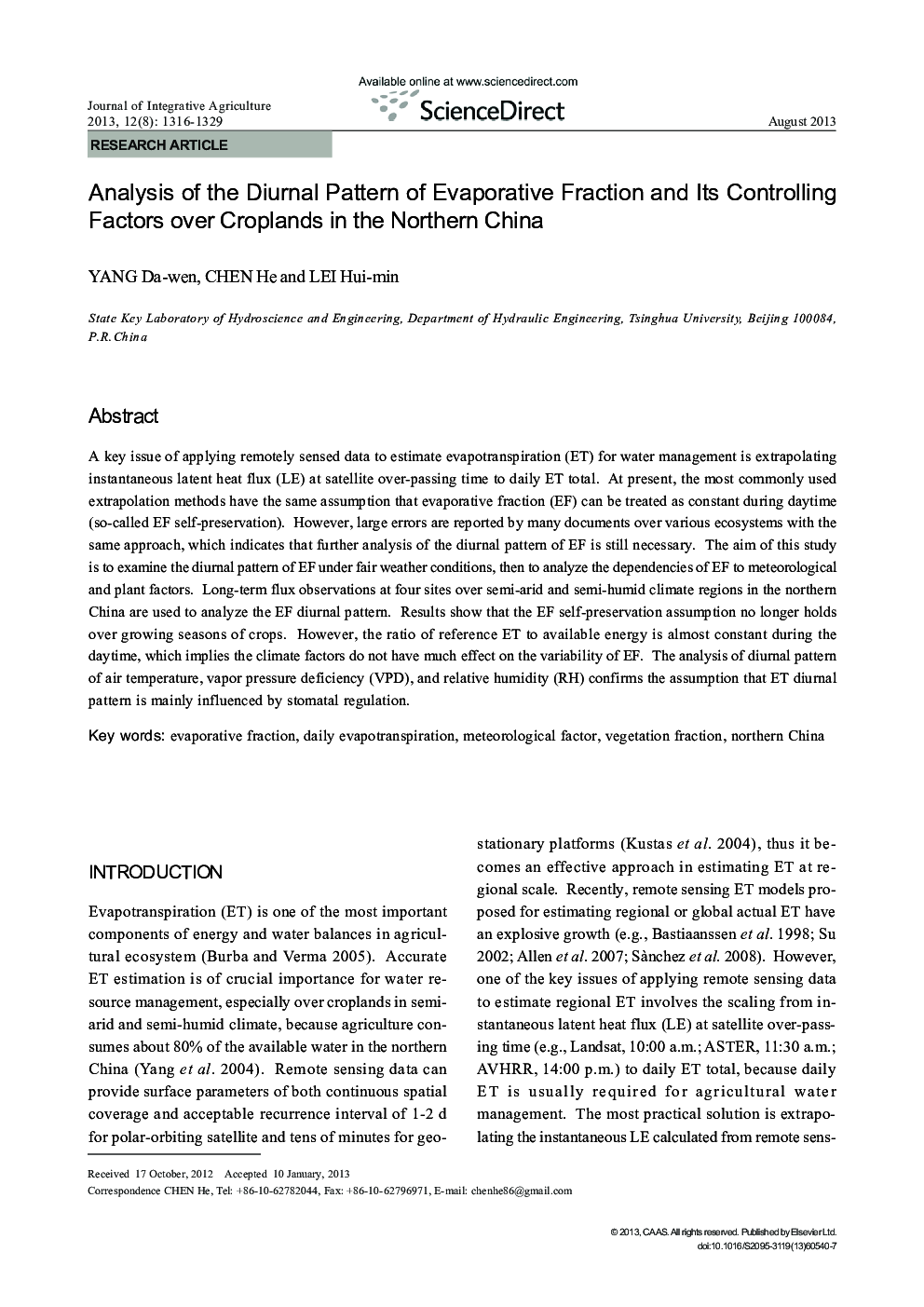| Article ID | Journal | Published Year | Pages | File Type |
|---|---|---|---|---|
| 4494931 | Journal of Integrative Agriculture | 2013 | 14 Pages |
A key issue of applying remotely sensed data to estimate evapotranspiration (ET) for water management is extrapolating instantaneous latent heat flux (LE) at satellite over-passing time to daily ET total. At present, the most commonly used extrapolation methods have the same assumption that evaporative fraction (EF) can be treated as constant during daytime (so-called EF self-preservation). However, large errors are reported by many documents over various ecosystems with the same approach, which indicates that further analysis of the diurnal pattern of EF is still necessary. The aim of this study is to examine the diurnal pattern of EF under fair weather conditions, then to analyze the dependencies of EF to meteorological and plant factors. Long-term flux observations at four sites over semi-arid and semi-humid climate regions in the northern China are used to analyze the EF diurnal pattern. Results show that the EF self-preservation assumption no longer holds over growing seasons of crops. However, the ratio of reference ET to available energy is almost constant during the daytime, which implies the climate factors do not have much effect on the variability of EF. The analysis of diurnal pattern of air temperature, vapor pressure deficiency (VPD), and relative humidity (RH) confirms the assumption that ET diurnal pattern is mainly influenced by stomatal regulation.
